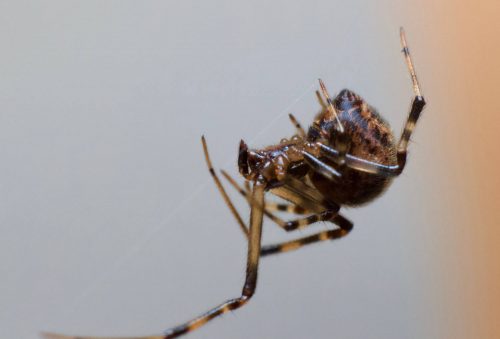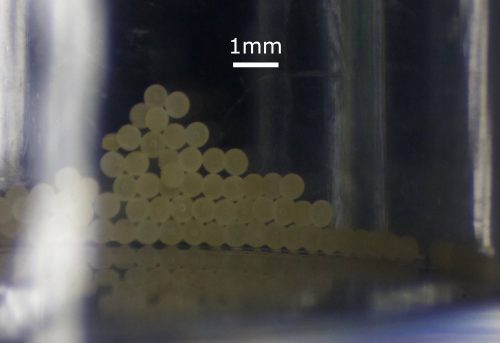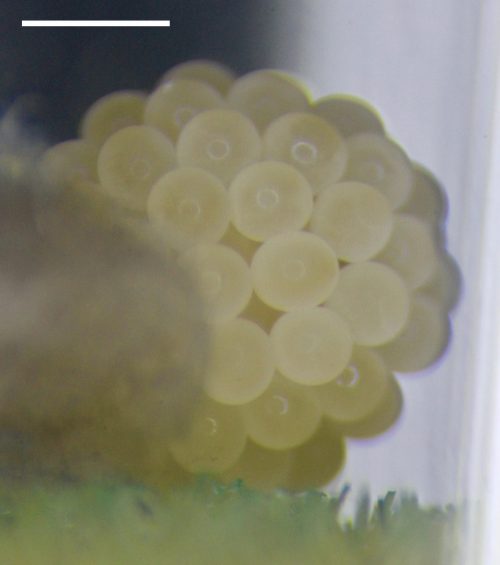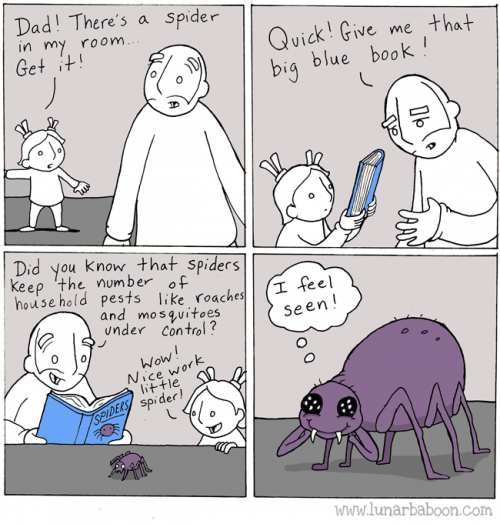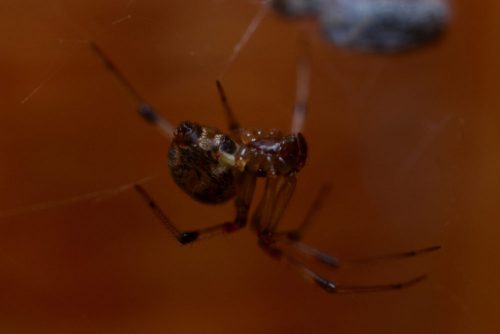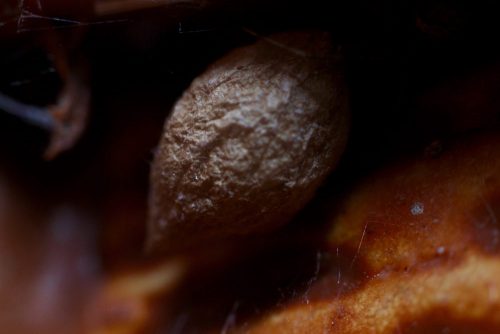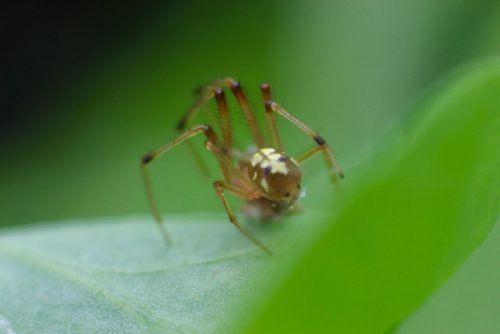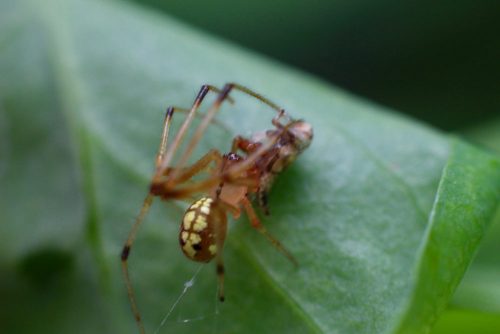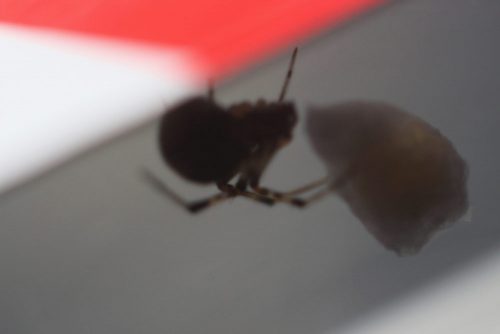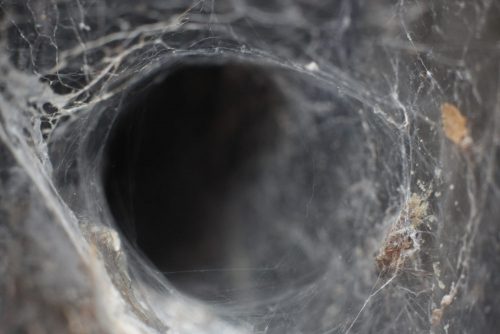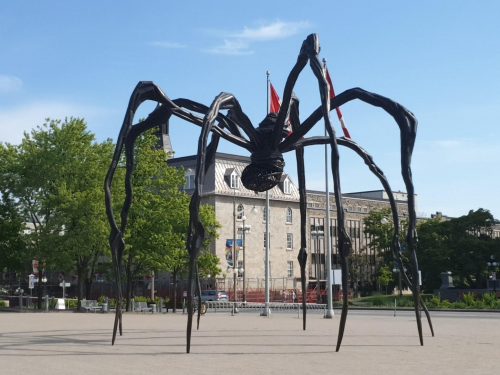Today was a glorious day for a road trip from Morris to Duluth. I told Mary that we should take it slow and easy.
“It’ll be a relaxing, low pressure trip,” I said.
“We’ll make frequent stops,” I said.
“We’ll stop now and then and go for walks to stretch our legs,” I said.
“It’ll be fun!” I said.
“We’ll look for spiders,” I quietly said.
And we did. The first half of the drive was a little disappointing, because it was unpleasantly hot, and spiders are wise and lay their trappy little webs and retire to the coolth under an overhang or in a small crack. We saw spider sign, but not much else. The one exception was this subtle little lady who was quietly lurking under a handrail with her babies at the Big Spunk rest area.


